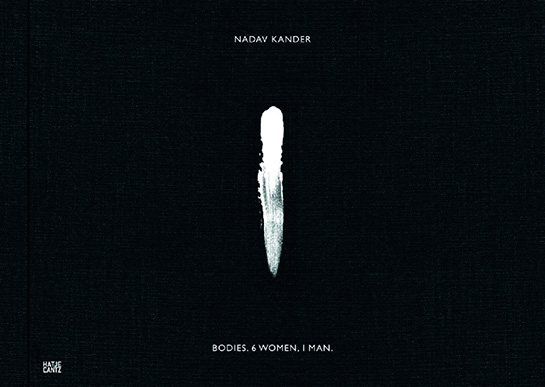It has been close to a decade since the podcast “Serial” in 2014, followed the next year by HBO’s “The Jinx” and Netflix’s “Making a Murderer,” brought both gravitas and unprecedented attention to the homicide-based documentary series. Time flies when you’re peddling crime.
Since then, the sprawling content business that the New York Times Book Review mystery columnist Sarah Weinman has called the true-crime industrial complex has matured and ossified. Entire channels, like ID and Oxygen, are devoted to the genre, even as the kind of thoughtfulness, thoroughness and originality that marked the pioneering shows becomes more difficult to find. But mystery lovers keep up the search.
The countless series sort themselves into subgenres: the missing-child show (like Hulu’s recent “Still Missing Morgan”); the glamorous-but-deadly caper show (MGM+’s recent “Murf the Surf”); the serial-killer show (A&E’s coming “The Torso Killer Confessions”).
The true-crime toward which I gravitate, however, is defined not by perpetrator or victim but by landscape. The regional crime series, in which place informs character, motive and method, is perhaps the truest contemporary descendant of the hard-boiled 1940s and ’50s crime films I adore.
This winter has seen an upswing in true-crime mini-series, now the genre’s most prominent delivery system, and I had to check out the ones that went in for local flavor. In most cases, that means places where a combination of isolation and economic disadvantage help to breed the crimes portrayed. “Murdaugh Murders: A Southern Scandal” on Netflix, “Murder in Big Horn” on Showtime and “Killing County” on Hulu all take pains to set their scenes.
The South Carolina Lowcountry of “Murdaugh Murders,” geographically confined and divided along lines of race and class, is a beautiful place with a “dark side” where a prominent family can sway the course of justice. The southern Montana reservations of “Murder in Big Horn,” where native girls and women disappear with sickening regularity, are “almost a lawless community” because of a welter of overlapping law-enforcement jurisdictions. Bakersfield, Calif., at the center of “Killing County,” is a faded boomtown “rooted in the past” whose frontier ethos contributes to its high rate of police shootings.
And setting, though of a very different kind, is also crucial to Hulu’s “Stolen Youth: Inside the Cult at Sarah Lawrence.” The “Sarah Lawrence bubble,” where things “are a little bit magical and special” and teenagers explore their independence on a leafy campus just outside New York City, is a crucial factor in the horrifying story of cultlike exploitation the series details.
Produced by Hulu’s corporate sibling ABC News along with Colin Kaepernick’s Kaepernick Media, “Killing County” is the most workmanlike of the four shows, and it is comfortable with the methods and formulas of broadcast-network crime reporting. It employs a narrator, the actor André Holland, and it has actors dramatically read letters, depositions and court testimony onscreen, injecting notes of meaning and emotion that captions wouldn’t transmit.
It’s also the most profligate of the four in its use of reporters, including two authors of a 2015 series of articles in The Guardian from which the show draws. Unable to speak to current county or city officers about the series of killings it examines, it interviews a roster of retired law-enforcement personnel from around the country, all of whom are skeptical of the methods and mind-sets displayed in Bakersfield.
If that all sounds talky, it is. “Killing County” is a convincing but boilerplate retelling of the problems in Bakersfield. While acknowledging that not much has changed despite a consent decree issued by the California attorney general, the series tries to finesse a hopeful finale by balancing the continuing anger of the victims’ families with scenes of them resolutely protesting. Nothing says bittersweet like a candlelight vigil.
“Murder in Big Horn,” directed by the Lakota and Diné filmmaker Razelle Benally, takes us away from broadcast news and toward the art house; it’s an atmospheric, moody production, relying heavily on images of the bleak, windblown environment of the Crow and Northern Cheyenne reservations.
Like “Killing County,” it is structured around a series of crimes taking place over a span of years, in this case the disappearances and deaths of young reservation women. The victims’ families recall the eerily similar circumstances of the crimes, and Luella Brien, the former editor of the Big Horn County News, explicates the setting and details the maddening lack of response to a crisis that transpires among the jurisdictions of reservation police, county sheriffs and the F.B.I.
The dramatic crux of “Murder in Big Horn” lies in the images of open, snow-dusted fields — again and again, families are asked to believe that their daughters, who have grown up accustomed to the region’s harsh conditions, have wandered off and died of exposure. Hypothermia, Brien says, is “the go-to answer for the dead-Indian problem in Montana.” At the same time that it exposes the flimsiness of those verdicts, though, the show allows that some responsibility may lie with a native community that doesn’t value itself enough to keep its daughters safe.
“Murdaugh Murders,” which premiered on Wednesday, falls between the business-as-usual of “Killing County” and the quiet introspection of “Big Horn,” which is to say that it’s a glossy Netflix product, with the heart of a tabloid and the outer skin of a sober documentary. (It’s also timely, coming out midway through the trial of the disgraced lawyer Alex Murdaugh, accused of killing his wife and son.)
The sordid, slowly unspooling saga of the Murdaugh family, moving back and forth in time across tragic accidents, mysterious deaths, brutal murders and comically brazen fraud, is an unbeatable crime story; if you don’t already know its stranger-than-fiction twists, “Murdaugh Murders” is worth watching simply for its coherent, if slightly and predictably sensationalized, account of the events.
It also has an obvious immediacy lacking in the largely retrospective “Killing County” and “Big Horn,” whose end points are grief and efforts at reform. “Murdaugh Murders” has a full cast of characters who are still living the story, particularly the young passengers in the fatal boat accident that sets things in motion. They are rich fodder for viewers who get pleasure from parsing the believability of true-crime interviews.
So far we’ve been talking about various degrees of watchable-but-ordinary; it is a big step up to the fourth show, “Stolen Youth,” which was directed by Zach Heinzerling (“Cutie and the Boxer”) and counts Liz Garbus (“I’ll Be Gone in the Dark”) among its executive producers. Across its more than three hours — its final episode clocks in at 74 minutes — it has some of the weight and a fair degree of the artfulness of the shows that kicked off the true-crime boom.
The flabbergasting case — involving Larry Ray, a middle-aged ex-con who moved into his daughter’s dorm at Sarah Lawrence College in 2010 and recruited a number of her friends into an abusive mini-cult that lasted a decade — has been a sensation since it was first exposed by New York Magazine in 2019. The 63-year-old Ray was sentenced last month to 60 years in prison on charges including sex trafficking and extortion.
The documentary isn’t redundant, though, because it is a direct window into the question that no amount of media coverage can really answer: How did the bald, doughy father of a college sophomore get away with living in a college dorm for a year, let alone subsequently drawing most of the residents to a small Manhattan apartment where he psychologically and sexually terrorized them and stole their money?
“Stolen Youth” doesn’t solve that mystery, but it suggests many answers. Most of the students involved are interviewed extensively, and while Ray does not appear, the show had access to audio and video recordings he made. The smart, articulate, rational victims, now 30-something, carry strong traces of naïveté and vulnerability; in some key cases, you sense the whiplash effect of young people from difficult economic backgrounds suddenly dropped into the Sarah Lawrence bubble.
And “Stolen Youth” makes conscious use of its three-act structure, seeking resolution in a wrenching final episode devoted to the two women who stuck with Ray the longest. As they re-engage with the world after Ray’s arrest, you can’t help considering which is the most compelling: the one whose repentance and reunion with her family, while hugely moving, follow a familiar arc; or the one whose adamant loyalty to Ray and his fabrications, whether delusional or calculated, can leave you with an uncomfortable mix of consternation and admiration. It’s a true-crime coup.



